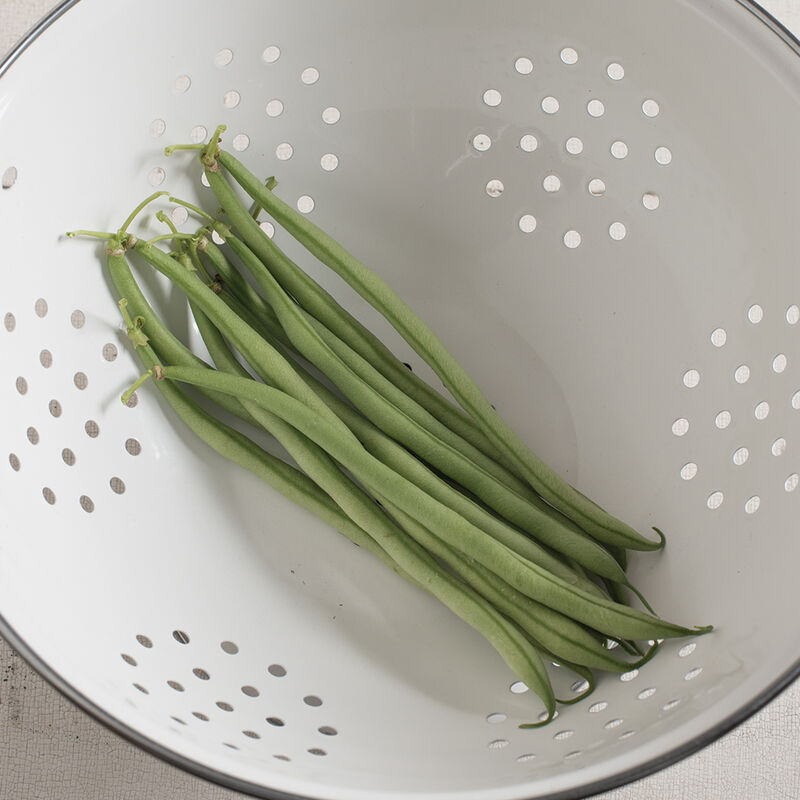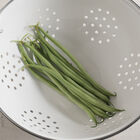Maxibel Bean Seed
Product ID:22.1122
Maxibel Bean Seed
Product ID:22.1122
Long and elegant.
High yields of slender, 7" green pods. Extended pod set. Brown mottled seeds. Bush bean.Specs:
- This product does not ship to the following countries: United Arab Emirates, Austria, Australia, Barbados, Belgium, Bulgaria, Bermuda, Bahamas, Switzerland, Cyprus, Czech Republic, Germany, Denmark, Estonia, Spain, Finland, France, United Kingdom, Greece, Hong Kong, Croatia, Hungary, Ireland, Iceland, Italy, Japan, Republic of Korea, Kuwait, Cayman Islands, Lithuania, Luxembourg, Latvia, Malta, Netherlands, Norway, New Zealand, Oman, Poland, Portugal, Qatar, Romania, Saudi Arabia, Sweden, Singapore, Slovenia, Slovakia, San Marino, Thailand, Trinidad and Tobago, Taiwan, Ukraine.
SCIENTIFIC NAME:
Phaseolus vulgarisCULTURE:
Choose well-drained soil with a pH range of 6.5-6.8. Optimum soil temperature for germination is 70–90°F (21–32°C). Plant when daytime soil temperatures average at least 60°F (16°C), or risk poor germination. Inoculants can increase yields. Dark-colored seeds germinate better in cool soil than white seeds. Do not thin. Filet beans are not recommended for freezing or canning.DAYS TO MATURITY: From date of direct seeding.DIRECT SEEDING: After last frost date sow seeds about 2" apart, 1" deep, in rows 20–36" apart.AVG. DIRECT SEEDING RATE:
1,000 seeds/125', 1 lb./175', 116M/acre at 8 seeds/ft. and 3' row spacing.SUCCESSION PLANTING:
For a continuous supply make successive sowings every 2–3 weeks through midsummer.INSECT PESTS:
Mexican bean beetles can be controlled with insecticides such as pyrethrin or azadirachtin.DISEASE:
Plow under or remove and compost bean straw in the fall to hasten destruction of most disease organisms. For Sclerotinia spp. (white mold) control, plant at wider row spacing to promote drying of plant leaves and soil. Practice a 3-year crop rotation, preferably into corn or grain crops. All our filet bean seeds are produced in areas known to be free of halo blight.HARVEST: Pick regularly to encourage new pod set. Filet beans are intended to be picked very slender, ⅛–¼" in diameter. A continuous yield of "extra fine" (¼" diam.) grade is maintained by picking every 36–48 hours. 2 days in hot weather or 4 days in cool weather is about the maximum delay between harvests to ensure an absence of oversized, tough beans.STORAGE:
Store at 40°F (5°C) and 90% relative humidity for 7–10 days.Seeds/Lb. (Avg.): 1,750.
Packet: 175 seeds, sows 29'.
Johnny's is committed to your success, every step of the way.
We want you, our customer, to be 100% satisfied with all of our seeds, tools, and supplies.
If anything you purchase from us proves unsatisfactory, we will either replace the item or refund the purchase price.




